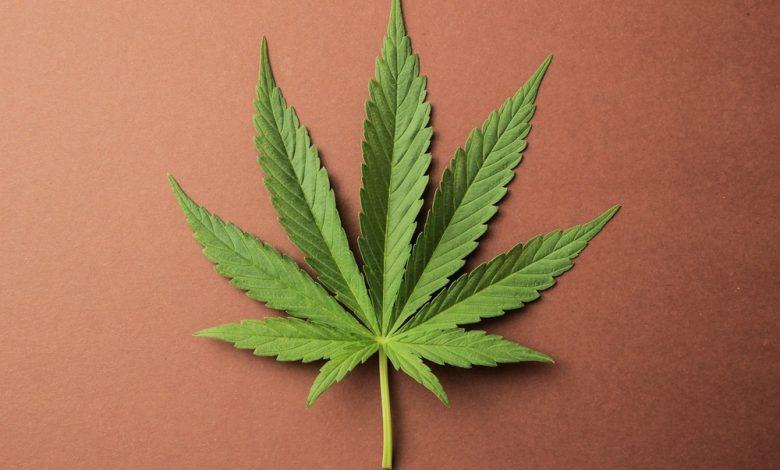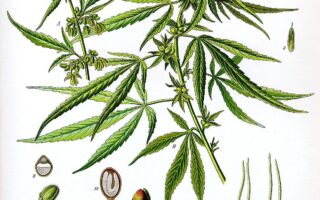Exploring the World of Cannabis: Nature’s Multifaceted Gem
In the vibrant tapestry of nature, few plants have sparked as much intrigue and controversy as cannabis. From its ancient roots in traditional medicine to its modern renaissance in wellness and recreation, cannabis has woven itself into the fabric of human culture across continents and centuries. Yet, despite its growing popularity, many remain perplexed by what cannabis truly is—its many forms, its myriad uses, and the science that underpins its effects. As we embark on a journey to demystify this fascinating plant, we will explore its botanical identity, delve into the diverse compounds it produces, and examine the wide-ranging implications of its legal status and cultural significance. Join us as we unravel the complexities of cannabis, shedding light on a subject that continues to captivate minds and ignite conversations around the globe.
Table of Contents
- Understanding the Basics of Cannabis: Origins and Varieties
- The Science Behind Cannabinoids: How They Interact with the Body
- Navigating Legal and Social Aspects: What You Need to Know
- Choosing Responsible Consumption Methods: Tips for Safety and Enjoyment
- Q&A
- Key Takeaways
Understanding the Basics of Cannabis: Origins and Varieties
Cannabis has a rich and complex history that spans thousands of years, with its origins tracing back to Central Asia. Ancient cultures utilized the plant for its psychoactive and medicinal properties, while it also held significant cultural and spiritual importance. Over centuries, cannabis was cultivated and adapted across various regions, leading to the establishment of distinct varieties. Today, the plant is primarily categorized into three main species: Cannabis sativa, Cannabis indica, and Cannabis ruderalis, each possessing unique characteristics, growth patterns, and effects on users.
Additionally, the modern cannabis landscape has seen the emergence of numerous hybrids, which combine traits from the primary species to cater to diverse preferences and specific medicinal needs. A few notable varieties include:
- Hemp: Low in THC, used for textiles and health products.
- Medicinal Strains: Target specific ailments such as anxiety or chronic pain.
- Recreational Varieties: High in THC, popular for their psychoactive effects.
- CBD Dominant Strains: Known for therapeutic benefits without the high.
The Science Behind Cannabinoids: How They Interact with the Body
Cannabinoids are fascinating compounds found in cannabis that engage with the body’s endocannabinoid system (ECS), which plays a crucial role in maintaining homeostasis. This intricate system comprises a network of receptors, endogenous cannabinoids, and enzymes that work together to regulate various physiological processes. When cannabinoids from cannabis, such as THC (tetrahydrocannabinol) and CBD (cannabidiol), enter the body, they bind to specific receptors like CB1 and CB2 located in the brain and throughout the immune system. This interaction can lead to a variety of effects, including altered mood, pain relief, and reduced inflammation, depending on the cannabinoid and the receptor it targets.
The versatility of cannabinoids is further enhanced by their ability to influence neurotransmitter activity and modulate physiological functions. For instance, THC is known to produce psychoactive effects by mimicking the action of anandamide, a naturally occurring endocannabinoid that regulates mood and cognition. On the other hand, CBD has gained attention for its non-psychoactive properties and potential therapeutic benefits, including anxiety reduction and seizure management. The unique interplay between various cannabinoids and the ECS promotes a wide range of potential health benefits, making cannabis a subject of increasing scientific exploration.
Key Cannabinoids and Their Effects:
- THC: Psychoactive, pain relief, appetite stimulation
- CBD: Non-psychoactive, anti-inflammatory, anxiety relief
- CBG: Neuroprotective, antibacterial, potential for reducing inflammation
- CBN: Sedative effects, potential for sleep aid
| Cannabinoid | Main Effects | Common Uses |
|---|---|---|
| THC | High, Euphoria | Pain management, appetite stimulation |
| CBD | Calm, Relaxation | Anxiety relief, seizure reduction |
| CBG | Stimulating | Anti-inflammatory, potential antibiotic |
| CBN | Sleep-Inducing | Sleep disorders, insomnia |
Navigating Legal and Social Aspects: What You Need to Know
Understanding the legal landscape surrounding cannabis is crucial, especially as regulations continue to evolve at local, state, and national levels. It’s important to familiarize yourself with various considerations, such as:
- Legality: The status of cannabis may differ significantly, with some jurisdictions allowing recreational use, others permitting only medical applications, and some maintaining full prohibitions.
- Licensing and Compliance: Businesses involved in the cannabis industry must adhere to strict regulations, including obtaining licenses and following health and safety standards.
- Taxation: Cannabis-related businesses often face unique tax structures, which can affect profitability and operational decisions.
- Employment Policies: Employers may need to establish clear policies regarding cannabis use, especially in safety-sensitive jobs.
Socially, the conversation around cannabis is shifting, with growing acceptance intertwined with ongoing debates. Understanding public perception can be beneficial for businesses and individuals alike. Consider the following aspects:
- Cultural Shifts: The normalization of cannabis use contributes to changing societal attitudes, impacting marketing strategies and customer relationships.
- Health Perspectives: Awareness about the medical benefits of cannabis is growing, leading to increased demand for cannabis products.
- Community Engagement: Businesses can benefit from engaging with local communities to build trust and promote responsible use.
| Aspect | Details |
|---|---|
| Legal Status | Varies by location; check local laws |
| Health Benefits | Potential relief for chronic pain, anxiety |
| Social Attitudes | Increasingly supportive, but varies across demographics |
Choosing Responsible Consumption Methods: Tips for Safety and Enjoyment
When exploring various consumption methods, it’s crucial to prioritize safety while maximizing enjoyment. Here are some essential tips to help guide your experience:
- Know Your Source: Always purchase cannabis products from reputable dispensaries or growers.
- Understand Potency: Check THC and CBD concentrations to gauge the strength of the product.
- Start Low and Slow: If you’re new, begin with small doses and gradually increase until you find your comfort level.
- Stay Hydrated: Keep water or hydrating snacks close by, as hydration can enhance your experience.
- Environment Matters: Choose a comfortable and familiar setting for consumption, preferably with friends you trust.
Additionally, being aware of the different methods of consumption can help you make informed choices. Here’s a simple comparison of popular methods:
| Consumption Method | Onset Time | Duration |
|---|---|---|
| Inhalation (smoking/vaping) | Immediate | 1-3 hours |
| Edibles | 30 minutes to 2 hours | 4-8 hours |
| Tinctures | 15-45 minutes | 2-6 hours |
| Topicals | Variable | Depends on product |
Q&A
What Are Cannabis? A Creative Q&A Exploration
Q1: What exactly is cannabis?
A1: Cannabis refers to a genus of flowering plants in the family Cannabaceae. This intriguing plant has been cultivated for thousands of years for a multitude of purposes, ranging from therapeutic and recreational uses to industrial applications. The most commonly known species are Cannabis sativa, Cannabis indica, and Cannabis ruderalis, each with its distinct characteristics and effects.
Q2: How does cannabis interact with the human body?
A2: Cannabis interacts with the human body primarily through the endocannabinoid system (ECS), a complex network of receptors and neurotransmitters. The key compounds in cannabis, called cannabinoids—most notably tetrahydrocannabinol (THC) and cannabidiol (CBD)—engage with ECS receptors to influence various physiological and cognitive processes, including mood, pain perception, appetite, and memory.
Q3: What are terpenes, and why are they important?
A3: Terpenes are aromatic compounds found in many plants, including cannabis. They contribute not only to the distinctive scents and flavors of different cannabis strains but also play a role in the plant’s effects. For example, the terpene myrcene may have relaxing properties, while limonene can be uplifting. The synergy between cannabinoids and terpenes is often referred to as the “entourage effect,” influencing the overall experience of cannabis consumption.
Q4: Can cannabis be used medicinally?
A4: Yes, cannabis has been recognized for its potential medicinal benefits. Various studies and anecdotal evidence suggest that cannabis can aid in managing chronic pain, reducing inflammation, alleviating anxiety, and addressing conditions like epilepsy and nausea related to chemotherapy. However, it’s important to consult with healthcare professionals before using cannabis for therapeutic purposes to ensure safety and appropriateness.
Q5: Why do people use cannabis recreationally?
A5: Individuals may choose to use cannabis recreationally for various reasons, such as relaxation, socialization, or enhancing sensory experiences. The psychoactive effects of THC can lead to euphoria and altered perceptions, making it appealing in social settings or as a tool for personal exploration. However, everyone’s experience with cannabis can differ, so it’s essential to approach it with mindfulness and moderation.
Q6: What are the legal considerations regarding cannabis?
A6: The legality of cannabis varies significantly around the world. In some places, it has been legalized for both medicinal and recreational use, while in others, it remains strictly prohibited. Understanding the laws in your specific region is crucial not only for compliance but also for informed decision-making about consumption and cultivation.
Q7: What are some common methods of consuming cannabis?
A7: Cannabis can be consumed in various ways, including smoking, vaping, edibles, tinctures, and topicals. Each method offers a unique experience, with varying onset times and durations of effects. For instance, smoking or vaping leads to more immediate effects, whereas edibles can take longer to kick in and may produce stronger effects due to their metabolism in the digestive system.
Q8: What should someone new to cannabis know?
A8: For those new to cannabis, starting with a low dose is key. The potency can vary greatly between strains and products, so taking it slow and allowing time to gauge individual responses is advisable. Additionally, learning about the different strains and their effects can help in choosing the right one to match desired experiences. always consume responsibly and in safe environments.
cannabis is a multifaceted plant that continues to intrigue and inspire. Whether for medicinal purposes, recreation, or exploration, understanding its complexities can lead to a more informed and enriching experience.
Key Takeaways
In wrapping up our exploration of cannabis, it is clear that this remarkable plant encompasses a world of complexity and potential. From its ancient uses in medicine and textiles to its modern-day role in wellness and recreation, cannabis has a narrative woven deeply into the fabric of human history. As we continue to unravel its mysteries, we are met with the promise of innovation, the importance of responsible usage, and an ever-evolving understanding of its effects and benefits. Whether you are a curious newcomer or a seasoned enthusiast, appreciating the nuanced characteristics of cannabis invites us to engage in thoughtful conversations about its place in our society. The journey of cannabis is ongoing, and as we collectively navigate its future, we open ourselves to both new possibilities and profound insights. Thank you for joining us on this enlightening journey!



